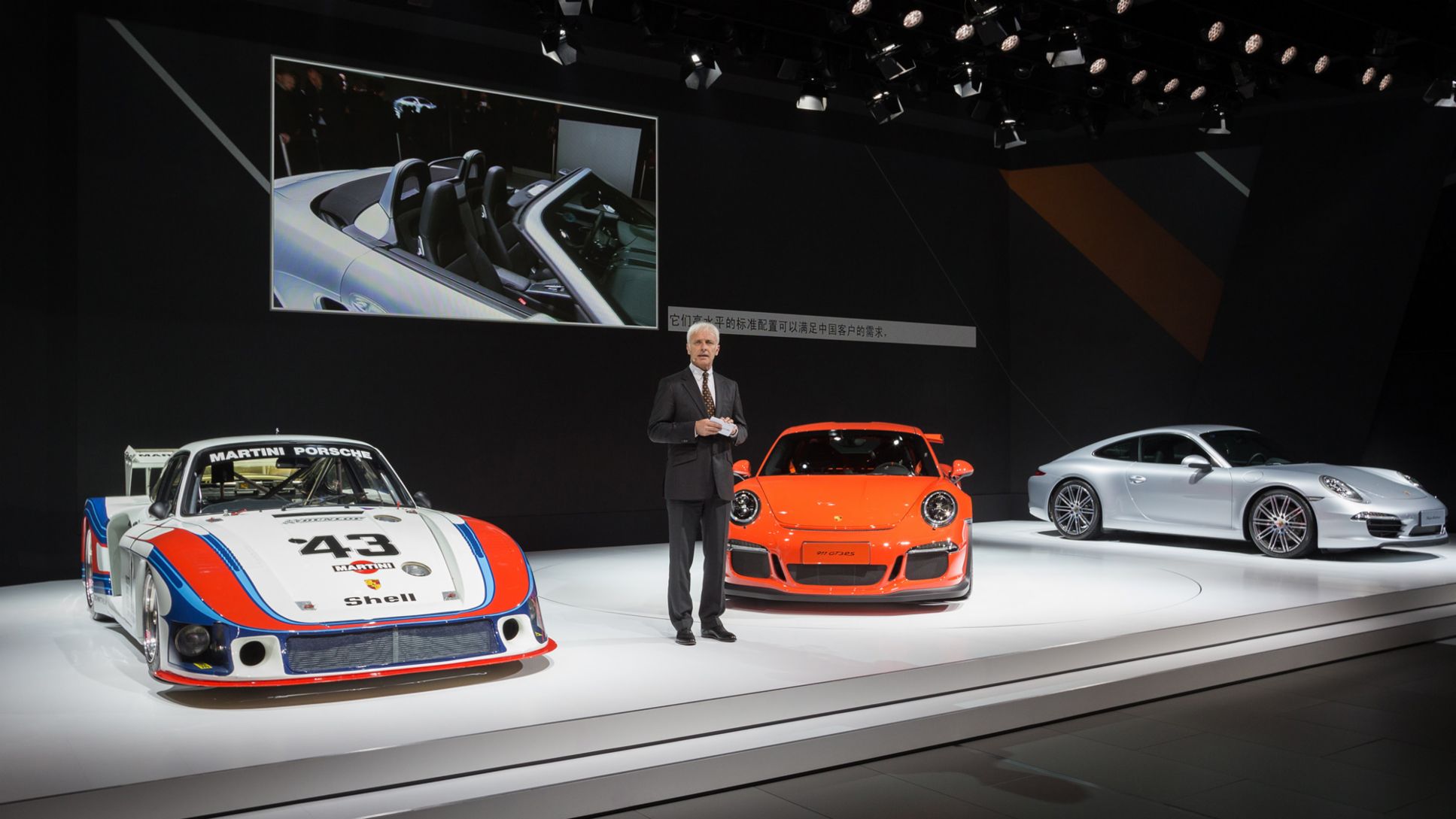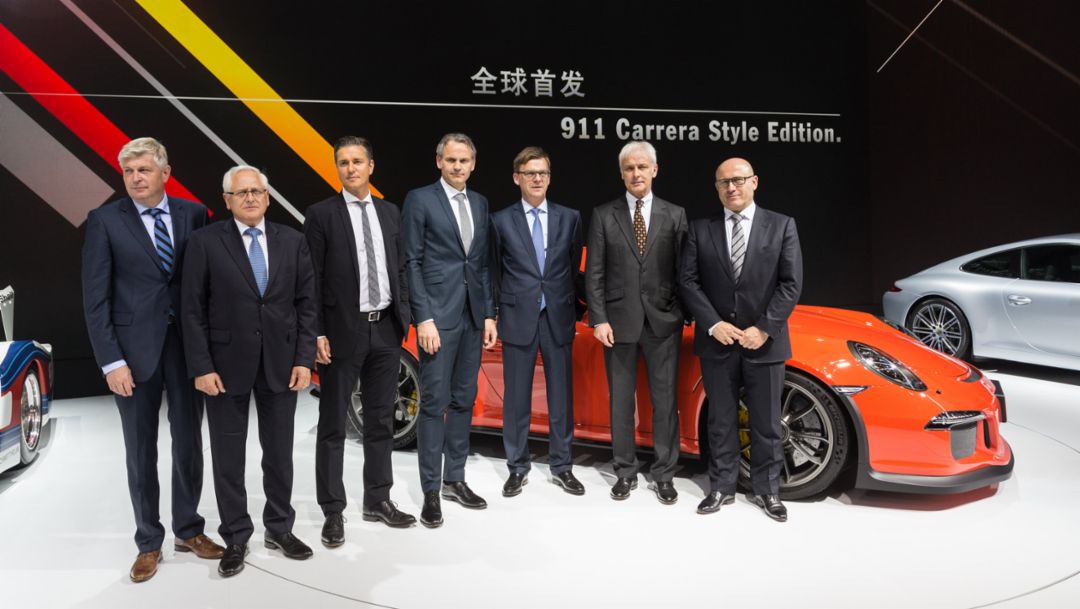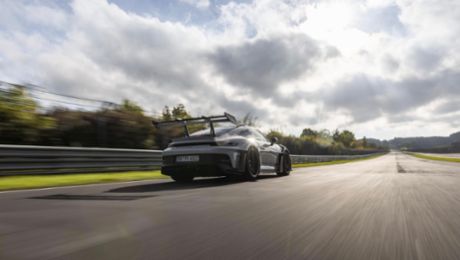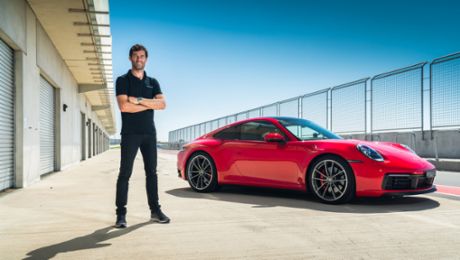Porsche feels right at home when it comes to motor racing. The latest outstanding example of this is the new 911 GT3 RS, the fifth generation of the high-performance sports car, which will celebrate its Asian premiere at Auto Shanghai 2015. The vehicle is equipped with the maximum degree of motorsport technology that is currently possible in a street-legal 911. In addition, Porsche will underscore its commitment in China by staging the world premiere of the Style Edition versions of the 911 Carrera and Boxster at Auto Shanghai. The Style Edition models have a very distinctive design and are fitted with extensive standard features.
The 911 Carrera and Boxster Style Edition models
The Style Edition models for the 911 Carrera and Boxster that will be presented in Shanghai carry the typical sports car genes from Porsche. Attractive equipment packages make them very appealing. The extensive range of standard equipment in all Edition models includes the Bose Surround Sound-System, which ensures an outstanding sound experience. The interior features Sport Design steering wheel, door sill plates with “Style Edition" lettering and the Porsche crest embossed on the head rests.
The 911 Carrera Style Edition is being offered with either rear-wheel or all-wheel drive in a Coupé or Cabriolet version. Standard equipment in the model includes fully electric sports seats, the Porsche Communication Management (PCM) system with a telephone module, Park Assist in the front and back, a reversing camera, windshield with grey top-tint, the Sport Chrono Package, LED headlights with the Porsche Dynamic Light System Plus (PDLS Plus), Power steering Plus, 20-inch wheels in 911 Turbo design and sports tailpipes.
Standard features in the Boxster Style Edition model include part-leather seats and a dualzone climate control system. The vehicle is also equipped with a roll-over protection bar painted in the same colour as the interior, a mesh wind deflector, bi-xenon headlights with the Porsche Dynamic Light System (PDLS), Power steering Plus, 19-inch Boxster S wheels and sports tailpipes.
The Asian premiere of the 911 GT3 RS
Porsche and motorsport belong together, and grand successes on the racetracks were milestones in the brand’s long history. One example is the Porsche 935/78, which the company developed for the 1978 World Sportscar Championship. Because of its white base colour and long tail shape, the 935/78 was given the nickname “Moby Dick". Its major triumphs included a victory in the 6 Hours of Silverstone during the 1978 World Sportscar Championship. There, the vehicle raced nearly as fast as the Formula 1 racing cars at the British Grand Prix that year.
The 935/78 shows: Motorsport is actually the most demanding development laboratory at Porsche, as the cuttingedge technologies tested for racing cars are also made available for production vehicles. This is the key to ensuring superior performance. With a lap time of seven minutes and 20 seconds on the North Loop of the Nürburgring, the new 911 GT3 RS even beats the historic record of just under seven minutes and 29 seconds set by the Carrera GT super sports car. The 911 GT3 RS is powered by a four-litre six-cylinder engine with 368 kW (500 hp) and 460 Newton metres of torque, combined with a specially developed PDK transmission (Combined fuel consumption 12.7 l/100 km; CO₂ emissions: 296 g/km).
The engine, which has the largest displacement and most power of any naturally aspirated engine with direct fuel injection in the 911 series, accelerates the high-performance sports car from zero to 100 km/h in 3.3 seconds and to 200 km/h in 10.9 seconds. Combined NEDC fuel consumption is 12.7 l/100 km. The chassis and aerodynamics are tuned for optimum racing circuit performance. The model’s intelligent lightweight design peaks with a magnesium roof; carbon fibre reinforced polymer (CFRP) was used to produce the front lid, front wings, rear lid and rear wing.
The Asian premiere of the 911 Targa 4 GTS
To mark the 50th anniversary of the 911 Targa, Porsche is offering this very popular model in the more powerful and dynamic GTS version for the first time. The targa concept of the 911 Targa 4 GTS delivers very safe driving enjoyment with all-wheel drive and a rollover protection bar; it also delivers open-air fun with a targa top that stows fully automatically. Contributing to a boost in dynamic performance are the 316 kW (430 hp) GTS engine together with the standard Sport Chrono package, PASM chassis, 20-inch wheels and a sport exhaust system (Combined fuel consumption: 10,0 – 9,2 l/100 km; CO₂ emissions: 237 – 214 g/km).
Despite its significantly extended features, the weight-to-power ratio with the 430-hp engine was improved from 3.9 kg to just 3.6 kg per horsepower compared to the S model. This lets the Targa 4 GTS reach a top speed of over 300 km/h (186 mph) with a PDK transmission, and the stopwatch records 4.3 seconds for the sprint from zero to 100 km/h (0 – 60 mph in 4.1 seconds). Although the engine produces an additional 22 kW (30 hp), its combined fuel consumption – which ranges from 9.2 to 10.0 l/100 km, depending on the type of transmission – is exactly the same as for the 911 Targa 4S.
The latest Targa can be made out at first glance as a GTS model with all-wheel drive, because – compared to the two-wheel drive 911 Carrera models – the rear wheel arches are flared an additional 22 millimeters, and the rear tires are ten millimeters wider. The front view is defined by the sport design of the car's front end with an opening for the auxiliary middle radiator and the smoked bi-xenon headlights that feature the Porsche Dynamic Light System
(PDLS).
Market China
China is a very strong market for Porsche. The country is now the fourth-biggest market for sales of the 918 Spyder, 911, Boxster and Cayman sports cars – behind the brand’s major traditional sports car markets in the USA, Germany and the UK. However, if one takes into account all model series, then China is the second-largest market for Porsche – right behind the United States – and on the brink of taking over the lead. The reason for this is China’s unabated economic expansion.
Consumption data
911: Combined fuel consumption: 9,0 – 8,2 l/100 km; CO₂ emissions: 211 – 191 g/km
911 GT3: Combined fuel consumption: 12,4 l/100 km; CO₂ emissions: 289 g/km
911 GT3 RS: Combined fuel consumption 12.7 l/100 km; CO₂ emissions: 296 g/km
911 Targa 4: Combined fuel consumption: 9,5 – 8,7 l/100 km; CO₂ emissions: 223 – 204 g/km
911 Targa 4S: Combined fuel consumption: 10,0 – 9,2 l/100 km; CO₂ emissions: 237 – 214 g/km
911 Targa 4 GTS: Combined fuel consumption: 10,0 – 9,2 l/100 km; CO₂ emissions: 237 – 214 g/km
Boxster: Combined fuel consumption: 8,4 – 7,9 l/100 km; CO₂ emissions: 195 – 183 g/km
Cayman: Combined fuel consumption: 8,4 – 7,9 l/100 km; CO₂ emissions: 195 – 183 g/km
918 Spyder: Combined fuel consumption: 3,1 – 3,0 l/100 km; CO₂ emissions: 72-70 g/km; Electricity consumption 12.7 kWh/100 km
918 Spyder (Weissach package): Combined fuel consumption: 3,0 l/100 km; CO₂ emissions: 70 g/km; Electricity consumption: 12.7 kWh/100 km






